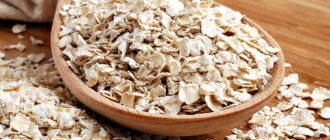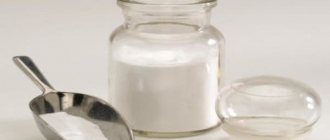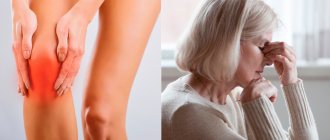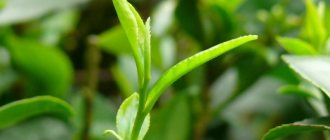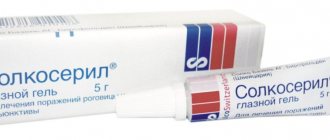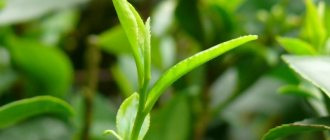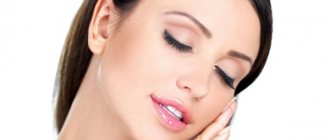Treating acne isn't just about taking medications. It's about taking good care of your skin so it can heal faster. Often we use home remedies to keep our skin calm and reduce inflammation. Honey is one of the most popular ingredients that is widely used in home remedies to treat skin problems including acne.
It is considered safe for topical use (unless you are allergic to it) and does not appear to interact with any other medications. However, it is best to consult a doctor before using it on your skin. In this article, we have explored the benefits of honey and how to use it to fight acne.
Honey is an all-natural and chemically pure solution widely used as a home remedy for acne. Although researchers have studied honey for its dermatological and therapeutic benefits, none of the studies are comprehensive and they need further evaluation. Also, only raw and pure honey seems to work on the skin. If you use commercially available processed honey, you may not get the results you want.
In vitro studies have shown that honey inhibits the growth of Propionibacterium acnes and S. aureus. It is also great for detoxifying your body and has an antibacterial effect when consumed.
Whether applied topically or taken in a drink, honey can be beneficial. There are several types of honey that are beneficial for your skin and health.
Types of honey
Raw honey
Raw honey (or any natural honey) is flower nectar and is produced by bees after they collect nectar from flowers. Raw honey contains propolis, a substance that bees use to seal their hive, which has antimicrobial properties. In vitro studies have shown that honey has medicinal uses and is effective against dermatologically relevant microbes. However, none of these studies are conclusive and require further research.
Honey is rich in antioxidants (flavonoids), vitamins, minerals, amino acids and some enzymes. It's antimicrobial, anti-inflammatory, antioxidant, healing and cleansing properties make it useful in acne management.
Manuka honey
Manuka honey is made by bees that collect pollen only from Manuka trees found in Australia and New Zealand. It is a non-peroxide type of honey, which means that the enzymes present in it do not produce hydrogen peroxide when applied to the skin.
Manuka honey has antimicrobial properties. This activity may be explained by its low pH and high sugar content. Besides this difference, Manuka honey has other qualities of raw honey. It also helps heal infections and wounds. Its antioxidant content is also similar to raw honey.
According to one study, naturally darker honey contains more antioxidants. Now you know which honey to buy for your skin. In the next section, we will discuss how you can use honey to treat acne at home.
Causes of acne
Almost every person in the world suffers from acne. The appearance of acne is caused by blocking the sebaceous glands responsible for the production and secretion of sebum, hormonal changes in the body.
Acne occurs due to certain hormonal activity during adolescence, which is often associated with the onset of puberty. This hormonal activity often causes the sebaceous glands to become dysregulated, resulting in a dramatic increase in sebum production.
This is why pimples are most common during adolescence. When the openings of these skin channels are blocked, sebum cannot escape and begins to accumulate under the skin pores, making them red and swollen. This makes the pores susceptible to infections and a vicious circle results. Pores become red, itchy, patches of skin appear unattractive and leave dark marks on the skin as they heal.
How to use honey for acne?
Before you proceed, keep in mind that just because a treatment is natural does not mean it is safe. You may be allergic to many natural ingredients. While one or two natural remedies may work for you, and some may even have scientific backing, don't experiment with homemade acne remedies.
Turmeric and honey
Turmeric has been used for centuries in Ayurveda and Chinese medicine for its antiseptic and healing properties. It has therapeutic benefits and can improve the appearance of skin, including acne. However, further research is needed to more accurately assess its effectiveness.
When combined with honey, it makes a powerful acne-fighting blend. To do this, mix a teaspoon of turmeric powder with honey and apply it on your face. Wash it off after 20 minutes.
Face mask with honey and cinnamon
Cinnamon has anti-inflammatory properties. A study conducted on 20 patients with mild to moderate acne found that cinnamon gel helped reduce acne lesions. Along with honey, it can help soothe acne.
You can mix a teaspoon of cinnamon powder with honey and use it as a spot treatment.
Precautions: Cinnamon may cause skin irritation. Although minor irritation is common, do a patch test before application.
Apple cider vinegar and honey for acne
People can't stop raving about the effects of apple cider vinegar on their skin and acne. It likely works by changing the pH level of the skin, which ultimately kills bacteria. However, there are no studies to confirm this fact.
You can dilute a teaspoon of apple cider vinegar with a teaspoon of water and mix it with honey. Apply the mixture on your face and wash it off later.
Oatmeal and honey for acne
Colloidal oatmeal (cooked oats) has cleansing properties as it contains saponins, which help remove all impurities from the skin. It soothes the skin and reduces inflammation.
You can boil oatmeal, mix it with honey and use it as a face mask. Keep it on for at least 15 minutes and then wash off.
Honey-sugar scrub for acne
Ground sugar is a great option for a natural scrub (due to its coarse texture). You can mix it with honey and apply it on your skin. It helps clear away dead skin cells by gently exfoliating them. However, be sure to rub it gently onto your face. Harsh exfoliation and rubbing can irritate the skin and make acne worse.
Honey and nutmeg
Nutmeg is another popular ingredient used in homemade masks and scrubs. This may have a slightly exfoliating effect.
You can try using it with honey, which will moisturize and balance its exfoliating effect. Mix a teaspoon of nutmeg powder with honey and use it as a spot treatment or face mask.
Sea salt and honey for acne
Sea salt helps improve skin barrier repair function. Along with honey, sea salt can help soothe your skin and prevent inflammation and acne.
Mix a teaspoon of honey with sea salt. You can dissolve salt in hot water and then add honey to it. Apply the mixture to your face and let it dry.
Coconut oil and honey for acne
Using coconut oil (extra virgin coconut oil) can be tricky because it is not suitable for all skin types, especially oily skin, and can make acne worse. However, it has anti-inflammatory effects. It is useful for inflammatory diseases such as psoriasis and atopic dermatitis.
Mix a teaspoon of cold-pressed coconut oil with honey and massage your face. Wash it later.
Tea tree oil and honey
According to a study, 5% tea tree oil can help reduce mild to moderate acne. However, make sure that you are not allergic to it. Also, dilute it with a small amount of carrier oil before using it on your skin.
You can mix 2-3 drops of diluted tea tree oil with honey and massage into your skin. After some time, wash it off.
Green tea and honey
Green tea can have many health benefits when consumed. However, its actual benefits are not well understood. People mainly use it for its soothing effects on the skin.
You can mix freshly brewed green tea with honey and then apply it to your skin.
Honey-lemon mask
Citric acid is the main AHA naturally found in lemon. This AHA helps improve skin turnover rate. However, people often use lemon for its astringent effect on the skin.
Mix a few drops of lemon juice with honey and apply it on your face. After some time, wash it off. Be careful when using lemon. Since it is rich in vitamin C, it can make your skin photosensitive. Use sunscreen while going out after using lemon.
Tomato and honey for acne
Tomato is said to have a tonic effect on the skin. It contains lycopene, which protects the skin from photodamage.
You can puree a small tomato, mix it with honey and apply it to your skin. Leave it on for 15 minutes before rinsing off.
Neem and honey for acne
Neem has been used for centuries in Ayurvedic medicine and home remedies. Extracts of this medicinal tree have antimicrobial properties and are effective against S. Aureus bacteria (causing pimples and boils).
You can mix neem leaf paste with honey and apply it on your face. Wash it off after it dries.
Red sandalwood and honey
In Ayurveda, red sandalwood or Rakta Chandan is used to treat inflammation and promote wound healing. People have often used it in home remedies for its healing effects.
If you want to use red sandalwood to treat acne, mix a teaspoon of red sandalwood powder with a teaspoon of honey and apply it to the affected area. Rinse off after 15-20 minutes. Don't forget to do a patch test to see if you are allergic to it.
Face mask with honey and olive oil
In studies on rats and mice, topical application of olive oil promoted wound healing, reduced oxidative damage, and promoted skin repair. In a controlled study, a mixture of olive oil, honey and sesame oil was found to prevent infection in burn wounds. However, olive oil may also interfere with skin barrier function when tested in both humans and mice.
If you want to use olive oil, you can mix it with honey and then massage it on the affected area. Leave it on for a while and then wash it off.
Honey-milk mask
Milk has been used since time immemorial to cleanse the skin. It contains lactic acid and is believed to have a gentle cleansing and exfoliating effect on the skin.
You can mix milk and honey and then apply it with cotton pads on your skin.
Aloe Vera and Honey for Acne Treatment
Aloe vera has anti-acne effect. It also stimulates fibroblasts in your skin, which produce collagen and elastin. This improves the quality and health of the skin.
You can mix freshly squeezed aloe vera pulp and honey and apply it as a face mask. Leave it on for a while and then wash it off.
These were some simple home remedies that you can try at home if you have acne. However, you must be careful when using natural remedies. Make sure the honey you use is raw or pure.
In addition, natural remedies may cause side effects, especially allergic reactions. Therefore, you should do a patch test before using any ingredient.
Acne treatment is all about maintaining a healthy skin care regimen, both externally and internally. While you're using acne medications and trying these remedies to properly care for your skin on the outside, also make sure you're eating healthy. A holistic approach is what you need to effectively treat acne.
Acne treatment
Once the cause is clear, it is time to find a way to get rid of acne. Since acne is caused due to blockage and subsequent infection of the sebaceous glands, clearing the blockage and fighting the infection should logically help cure the symptoms.
This is where the honey acne mask comes into play. Using a honey mask for pimples not only clears the blockage but also removes infectious germs, thereby reducing the number of pimples. Different types of honey masks are used for different skin types. Below are some of the most widely used mask combinations, you need to choose the mask that will solve your specific problem.
Reviews
- Irina, 25 years old : “I used a composition of honey and lemon to cleanse my skin. I carried out all the activities 2 times a week, within 2 minutes of regular use I managed to defeat acne and whiten my skin. But I don’t recommend this mask to everyone, since my friend also used it, but her breakouts became even more.”
- Svetlana, 18 years old : “On the Internet I found an interesting recipe for making a honey mask with bran. I have been performing this therapy for a month now and during this time the condition of my skin has noticeably improved. Inflammation, rashes and age spots disappeared. I didn’t find any side effects, so I continue treatment further to achieve maximum effect.”
- Inna, 35 years old: “On the advice of a friend, I decided to eliminate my acne with a honey mask. At first I was worried that an allergy might occur, but after the first session I realized that the effect was very positive. Although I only had 2-3 pimples, they shrank significantly, my skin dried out, and the redness disappeared.”
A honey face mask is a unique remedy for those girls who are trying to get rid of rashes. Side effects from this cosmetics are extremely rare. As a rule, this occurs when all rules and dosages are not followed. If you are in doubt, you should consult a specialist.
conclusions
Acne can be caused by many factors. Homemade masks offer an all-around advantage when compared to their factory-made competitors when it comes to treating low to moderate levels of inflammation. There are an impressive number of powerful ingredients, such as sea buckthorn oil for sea buckthorn masks, that help with such problems. Among the best masks, according to most people, you can find good options for almost any type of dermis. Compliance with the rules of use will help to avoid unpleasant consequences and also increase the effect of therapy. If you always take into account the list of contraindications for each product, then care will become easy and will not result in side effects.
What are the benefits of honey for facial skin?
Natural honey contains more than 200 different substances, including amino acids, vitamins, minerals and enzymes, but primarily sugar and water. The main components of honey sugar are from 35 to 40% fructose, up to 30% glucose and at least 5% fructo-oligosaccharides. Scientists explain the amazing antibacterial activity of honey, proven in a number of clinical studies, by the high concentration of glucose. Fructooligosaccharides are probiotic agents that help the body improve skin barrier function.
Honey contains potassium and calcium, magnesium and selenium, sodium, phosphorus, iron, copper, manganese, zinc, vitamin C and B vitamins. Each of these elements contributes to the benefits of honey procedures. Thus, ascorbic acid promotes the production of collagen, fights free radicals, saves from inflammation, and supports the immune system of the skin. Thanks to it, the skin becomes elastic, moisturized, the complexion improves, and fine wrinkles disappear. Zinc prevents excessive sebum secretion, has an astringent effect, softens and whitens, affects the rate of healing of wounds and ulcers, and relieves irritation. Pantothenic acid and pyrodoxine (vitamins B3 and B6) are recognized by scientists as an effective remedy against dermatitis, remove excess fluid, relieve swelling and puffiness. Riboflavin and cinocobalamin (vitamins B2 and B12) stimulate cell division, help skin renew itself, restore youth and elasticity.
Recommendations for using honey masks
- It is always better to use freshly prepared masks
- Before using the mask, wash your face, preferably with warm water or a natural cleanser, not soap.
- Try to use only organic ingredients
- Do not use soap to wash off the mask, this will cause you to not get any benefit from the mask.
- After you wash your face with warm water, wash it again with cold water a few minutes later. This will increase the elasticity of the facial muscles
Be careful, there are contraindications
Not all women are allowed to use honey masks. First of all, the limitation for use is an allergic reaction to honey. If you carry out the procedure in the presence of this disease, a skin rash, itching, and possible swelling of the respiratory tract will immediately occur, which is very life-threatening.
It is not recommended to use products based on bee products in the following conditions:
- severe telangectasia;
- excessive sensitivity of the integument;
- ulcers on the face;
- bronchial asthma;
- diathesis;
- dermatological pathologies;
To avoid negative consequences, you should consult a doctor.
Preparation of raw materials
Proper preparation of raw materials is very important. At this stage, a base is formed, the basis of a useful mixture or mask. The main thing here is to choose the right leaves.
There are several simple rules for selection and preparation:
- You need to choose the thickest, fleshiest leaves, slightly dried out at the ends, but without visible damage. There should be no signs of rotting;
- To obtain the most beneficial juice, the plant should be stopped watering 10 days before cutting;
- Leaves must be cut off near the stem, closer to the ground;
- Rinse with plenty of warm, running water;
- Dry;
- Wrap in paper or cotton cloth;
- Place in the refrigerator for 10 - 14 days. Leaves should be placed so that they are as far away from the freezer as possible;
- After the required period has passed, the leaves must be removed;
- Throw away those that have shriveled or darkened;
- Rinse others again, remove thorns and thick skin;
- Squeeze thoroughly until the juice releases. You can squeeze it manually or using a meat grinder.;
- Be sure to strain the juice through cheesecloth;
- Pour into bottles, preferably dark glass;
- Store in the refrigerator or in a cool place away from sunlight;
- The juice retains its beneficial properties for 10-14 days, so it should be used as a medicine against acne as quickly as possible.
The juice must be prepared no later than 3 hours after unloading the plant leaves from the refrigerator. When using a meat grinder, the primary mass should be put in the refrigerator for an hour and a half and only then squeezed out, and through double gauze.
This way you can get biostimulated juice, which is much healthier for the skin.

